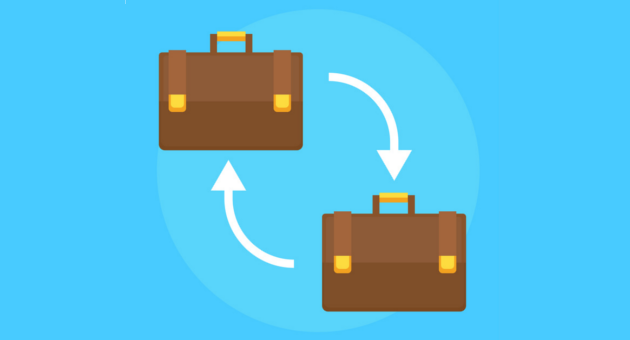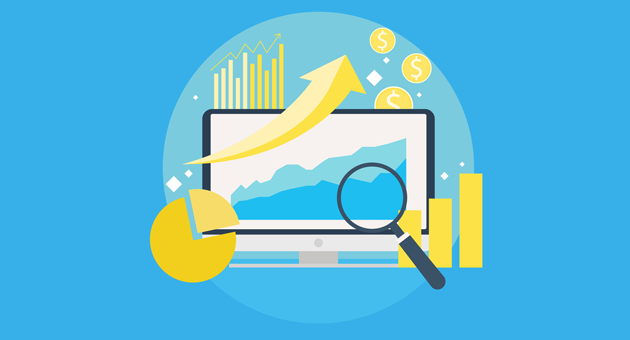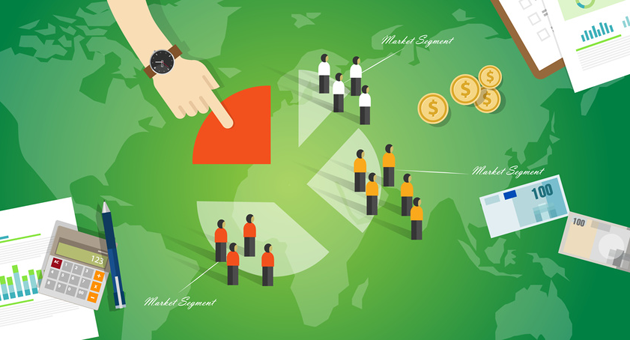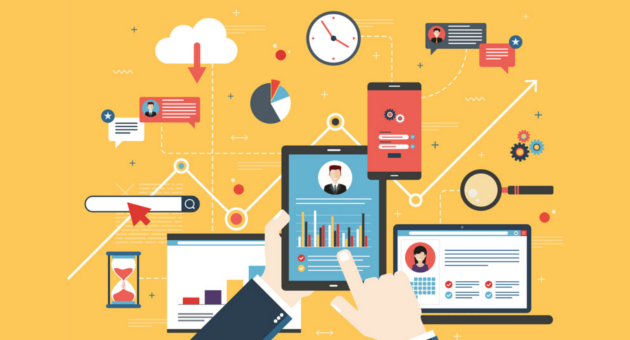
Today we are going to talk about a different kind of marketing, which is not usually discussed in this blog, but that is as important as marketing intended for consumers (B2C) and which is crucial for many companies, depending on their area of expertise: B2B marketing.
With this post, we will establish the theoretical foundations of this type of marketing as well as its importance in the business world.
· What is B2B Marketing?
B2B (business-to-business) marketing is the set of steps that a company will follow when selling directly to other companies or organizations, not to the end consumer. These organizations can use these products to produce end products or for resale (sale to distributors).
Currently, the abbreviations that are commonly applied to these transactions, B2B or B-to-B, are closely related to the company’s activities on the Internet. However, the reality is that this type of commerce has a long history (companies have always sold to other companies).
Long before the rise of the Internet and even today, B2B trade was operated and continues to operate through exchange channels of privately held electronic data (EDI). Most B2B commerce started through these channels, but the Emerging business-to-business electronic transactions increasingly depend more and more on the Internet.
B2B marketing is no more complicated or more complex than other marketing techniques. However, some things should be taken into account when planning a successful strategy. The main things you should consider are:
- Establish relationships
- Sincere technical interactions
- Intensive trade negotiations
- Pay close attention to after-sales services

► 1.1 Types according to relations
To properly plan a B2B marketing strategy, the first thing we have to know is to which category our company belongs, according to the relations established by the company and types of marketing campaigns they use. The sales categories are divided into three main forms and most companies belong predominantly to one type:
● Industry experts.
Companies that belong to this group work with distributors specialized in marketing their products and attracting buyers. The actual sale can happen at annual or seasonal meetings where the company receives its distributors, makes presentations and uses two or three days to negotiate orders. says Harry Johns White, Marketing Specialist at NBAblast
For example, it is likely that process engineering companies will focus on the petrochemical industries.
Their job is to build refineries and chemical factories. Occasionally, these companies also build power plants for government organizations, compression stations for pipes, etc.
Companies dedicated to motorsport have several suppliers working exclusively for this sector, and car manufacturers specialized in golf cars will sell mainly for golf courses.
A subgroup of the specific category consists of companies that will sell to a restricted category within the same field. Companies manufacturing equipments for medicine or for laboratories, fall into this category, for example, they sell only to certain types of hospitals or clinics.
● General Suppliers
At the other extreme are the companies that sell products for all kinds of companies.
Examples include companies that sell office supplies, file cabinet manufacturers, and office furniture manufacturers.
Advertising agencies and public relations firms can be listed in this category, although many of them end up specializing in offering services for just a few sectors.
We can list in the subsets of this category the producers who sell to all sectors but usually work with a specific category of companies. For example, tool makers or steel producers who sell mainly to manufacturers and very rarely to wholesalers, retailers or financial companies.
Some companies will deal exclusively with one department, even if they offer services for different sectors.
Payroll or health plan companies are a clear example of this category, since their clients are financial or human resources departments, but these departments are present in most companies from different sectors.
● Companies specializing in supplying products to distributors
Companies that belong to this group work with distributors specialized in marketing their products and attracting buyers. The actual sale can happen at annual or seasonal meetings where the company receives its distributors, makes presentations and uses two or three days to negotiate orders.
When they need to add or change distributors, often these companies need to create a complex recruitment process to select the best candidate to promote their brand.
In some industries, for example, the sale of tour boats, the transactions are done directly with the retail channel and automotive companies deal directly with their partners all over the world.
The three general categories described don’t present an exhaustive description and there are all kinds of variants and specializations and, of course, within large companies, different divisions may use different methods to reach their markets. However, separating companies in three groups will facilitate the task of developing a communication strategy, helping us to identify our target.

· Differences between B2B and B2C marketing
As we have mentioned, B2B marketing is no more complex than “traditional” B2C marketing, but there are some differences that we should take into account when designing a sales strategy. Let’s summarize these differences now:
► Size of B2B vs. B2C
In B2B, we usually find small vertical markets, often niche markets made up of thousands of sales possibilities.
On the other hand, B2C markets are generally larger, with access to tens of billions of options.
► Purchase process
In B2B, sales are usually more complex. Often, this process can take several months, demanding a lot of attention.
Meanwhile, B2C sales are less complex, depending on the product or service that is being sold. In many cases, they don’t take more than a few minutes (impulse purchase) or may take a few days, for more expensive products. However, there are usually not many people involved in the purchasing process, which means that the trading period is much shorter.
► Sales process
B2B sales require a lot more work (vendors need to understand the customer needs, to build a relationship based on trust), which means that the process can last for several months.
However, B2C sales are faster because usually, the company will sell directly to the consumer or a retailer. To create a sales strategy, it will be necessary to convince the consumer that he will need to buy this product.
► Cost of sales
When we are talking about B2B the total value of sales is usually higher, cost can range from thousands of euros to tens of millions of euros.
However, for B2C sales the cost of products can vary greatly. Many companies earn only a few cents per sale, for example in products for the home. On the other hand, companies that work with luxury goods or large investments, such as real estate agents or cars will earn lots of money for every closed sale.
► Purchase decision
In B2B, the decision to buy is usually driven by need and budgets, therefore the decision tends to be based on price and the advantages of each product.
And in B2C, buying decisions tend to be made based on expectations. In many cases, customers will buy moved by impulses, without stopping to reflect on the real need for getting the product.
► Brand value
In B2B businesses, brand identity in the markets is created through personal relationships and long-term sales.
However, in B2C businesses, brand identity in the markets is created through advertising, and now through social media.
► Long-term customer value
In B2B, the long-term value of customers is much greater because of the higher product cost and the probability of repeated sales or complementary sales to the same client.
However, in the B2C world, the long-term value of a customer is lower due to the lower cost of the products and the fact that many companies are competing for the same customers.

· Advantages and Disadvantages of B2B Business Models
As we saw earlier, in B2B marketing, the company sells its products to other companies or suppliers directly and not to customers. This business model offers a series of advantages over B2C marketing, but also brings some difficulties.
► 3.1 Advantages of B2B Marketing
- The first and most important advantage of this type of marketing is that the company has to deal with other companies and not with a large number of customers. As these companies need to buy these products, it is much easier to convince them to do business.
- Also, the total value of sales will generally be higher, resulting in higher transactions, with potentially greater profits.
- Another advantage of B2B marketing is that once companies become your client, they will remain working with you for a long time, if your services are good, and you are offering adequate customer support. In short, brand loyalty, in the case of companies, is higher compared to final consumers.
► 3.2 Disadvantages of B2B Marketing
The biggest disadvantage of this type of marketing is that the target market is limited, as the number of companies is much smaller than the number of consumers, which will greatly reduce the target market.
Another disadvantage is that in many cases the company has to offer a discount for recurring orders since the buyers have much greater negotiation power, when compared to end customers who only buy one or two products and therefore don’t have bargaining power.
Another limitation is that there are several people involved in the cross company sales process, and the purchase can take a long time. In B2C marketing, the purchase decision is immediate because it involves fewer people. B2B marketing is a process that requires a lot of time.

· Examples of B2B Marketing Strategies
Now that we’ve seen the theory, let’s look at some examples:
● Tetra Pak demonstrates its marketing and product expertise. To do that, the company sent selected, interesting and funny emails inviting subscribers to a mini-adventure. They included a drop-down list that imitated the appearance of Instagram, directing the readers to a portal with additional design tips and their products.
The hyper-objective company campaign (only 72 sample kits were shipped) had a great success and got more than 500 responses from its target audience.
●Xerox uses humor to drive brand change. That strategy plays an essential role in the campaign, which includes television, print ads and even an update of the website.
●In one of the ads, we can see a monk who is in charge of the translation of a document for different languages that should be sent “as soon as possible” to all the monasteries of the world. To solve the problem, He would need to use Xerox technology that facilitates the processes of document distribution.
The Xerox campaign was very successful, getting a lot of coverage and positive results from publications as Digiday, Forbes, and MediaPost. Over 1.7 million people watched their official video on Youtube in four months.
● Adobe used the content center to change the perception of the buyer.
The finalist of the Adobe Insight Community of the Year award became famous in the publishing company. They needed to expand the perception of the market beyond self-publishing when they acquired Omniture, a marketing analysis company.
In particular, the company needed a way to engage regularly with marketing leaders, the main target audience of Omniture.

· Below are examples of B2B businesses:
- Below are examples of B2B businesses:
- -A Danish Water Technology is an infrastructure solution of water pipes for houses and installations. This B2B site has become an indicator of Denmark’s ambition to find and develop better, cheaper, and more efficient ways of dealing with hydraulic technologies.
- – ACME is a major supplier of tare and packaging for chargers and logistics operators. Each color, image, and content on their site was created to improve their B2B marketing strategy, evoking an emotional response in the buyers.
- -Alibaba, based in China, is one of the best B2B examples in e-commerce. For starters, more than 18 million buyers and sellers from around 240 countries are using this business platform. The e-commerce company was created in 1999, and currently has the largest e-commerce website in the world. This company is considered the largest global e-commerce platform for small businesses.